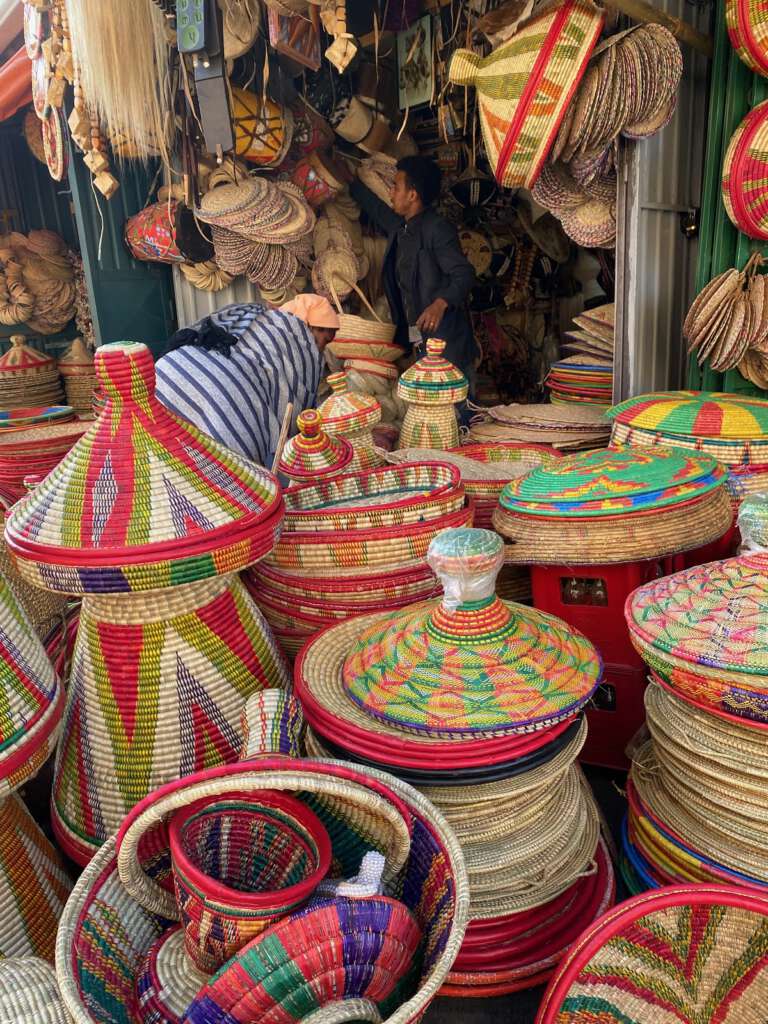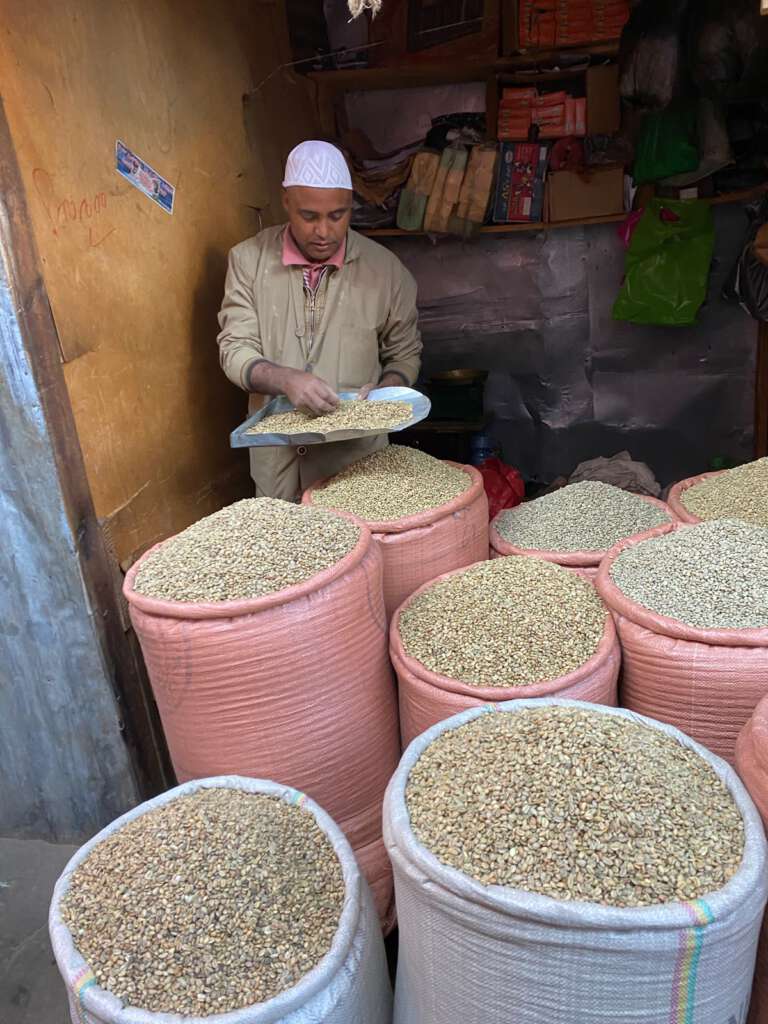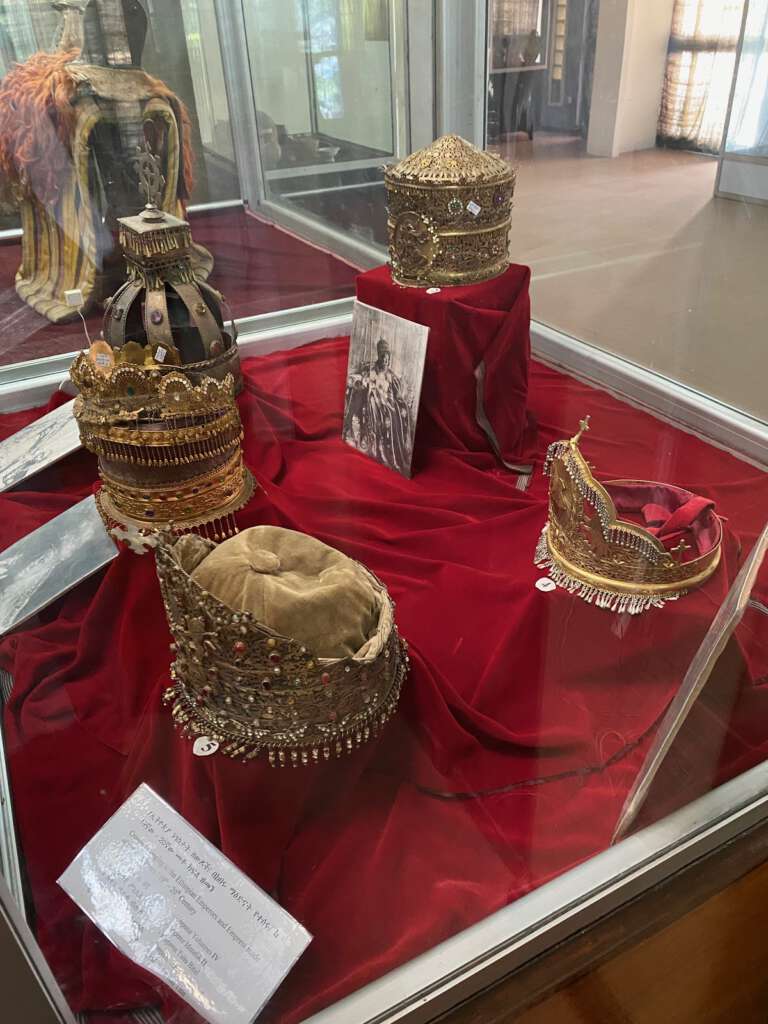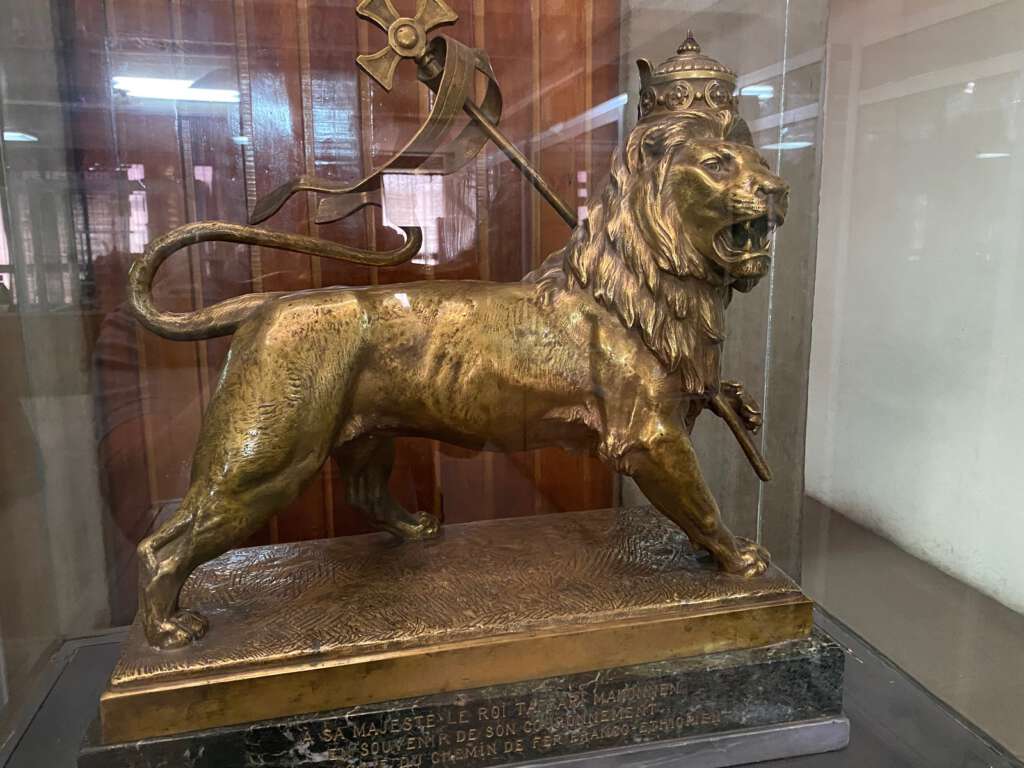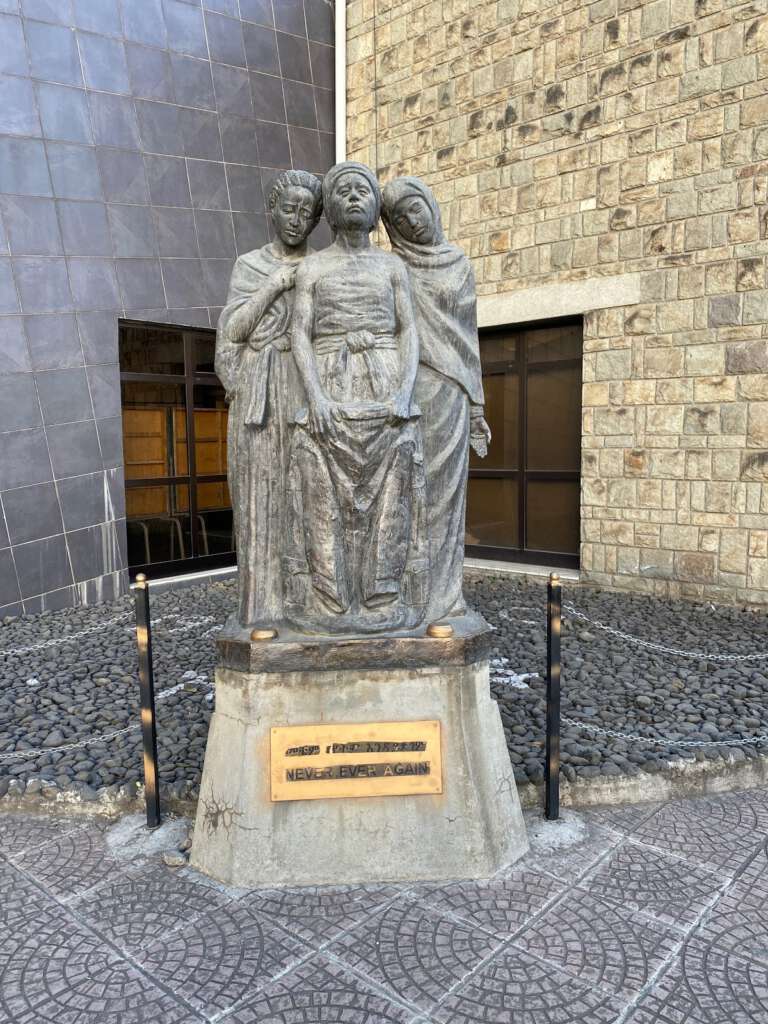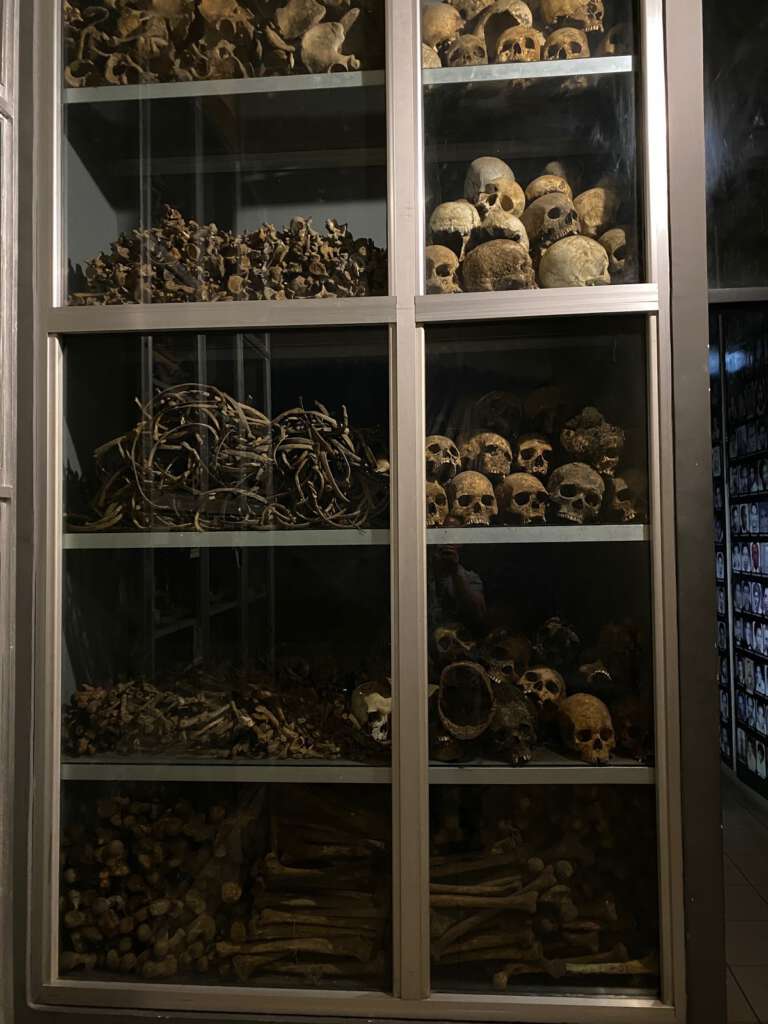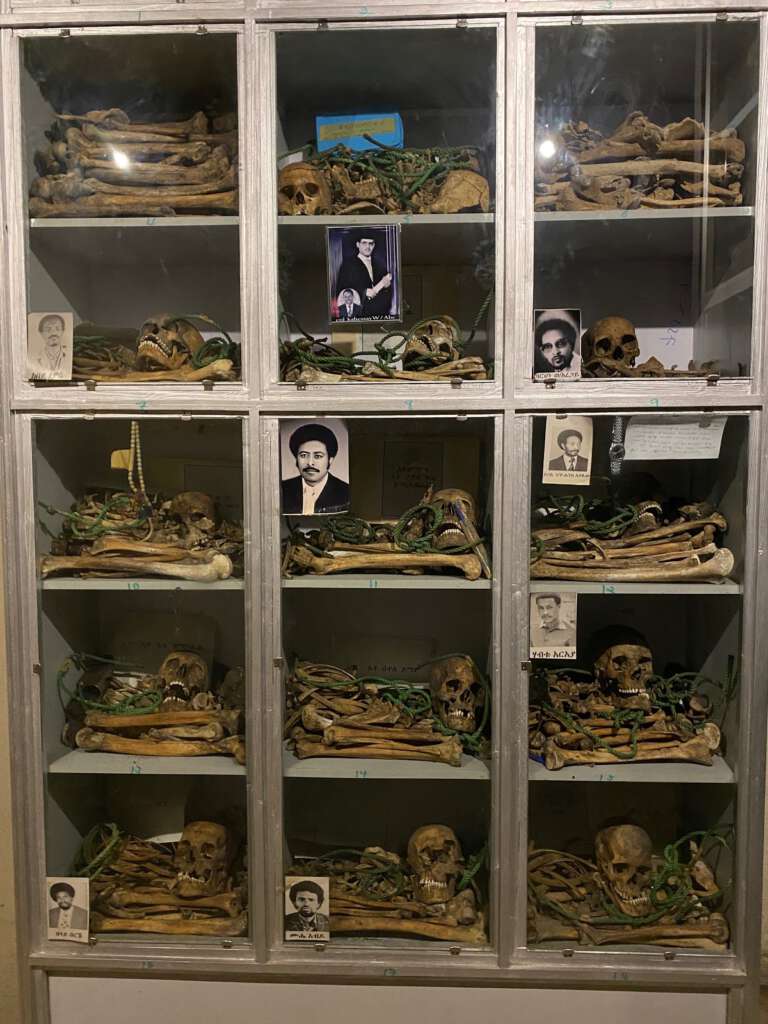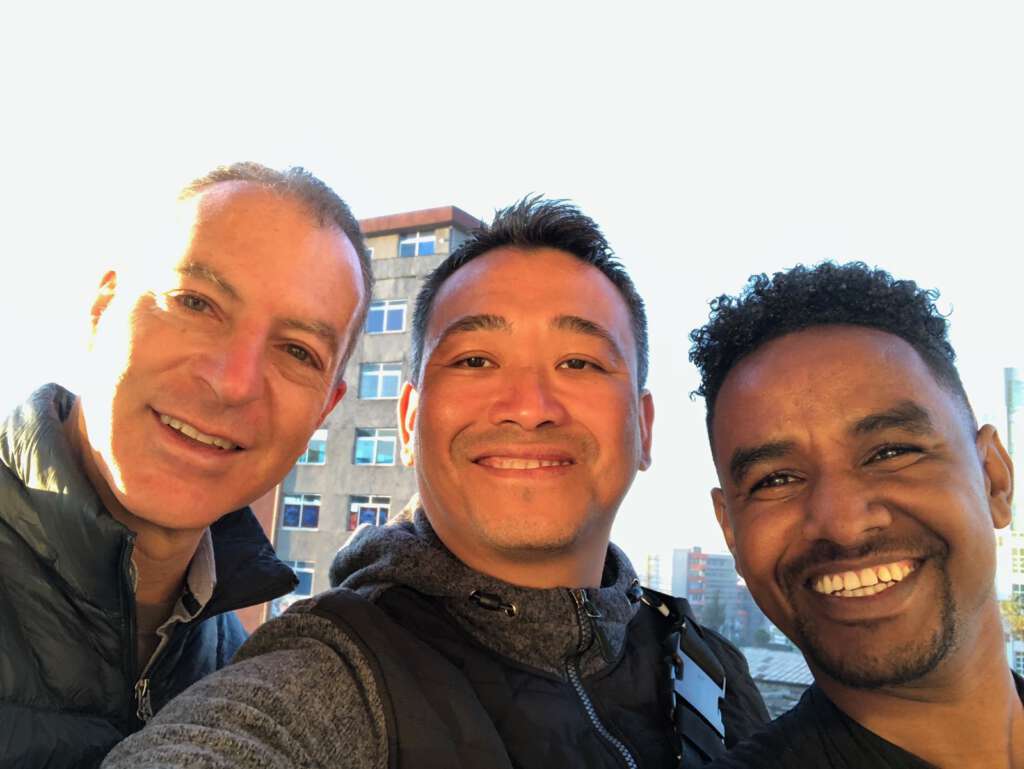
Kenya and Ethiopia – Part 7: Mercato and Half Day Addis Ababa Tour
Mark’s main interest in life is food. He is a big-time foodie, spending nearly every evening watching cooking videos, thumbing through cookbooks, and perusing cooking blogs. When we go into a bookstore, he visits one section and one section only: the cookbooks.
There is a travel video blogger named Mark Wiens who makes videos which are a perfect mix of food and culture. Mark Wiens visited Addis Ababa, and he was taken on an early morning tour of the country’s busiest market, called Mercato, by a young guy named Birhanu (nickname: Bre) from the tour company Go Addis. The market was incredible in terms of how hectic and chaotic it was.
–
Of course, I looked up Go Addis and found that tour, and signed us up. I combined it with a second tour, one that takes you across the city to see some of the interesting sights and museums. A few days before the tour, I received a confirmatory e-mail from Go Addis, and I saw that our guide was going to be Bre, from the video. I kept that a secret from Mark.
We woke up early, got dressed, and headed down to the lobby of our hotel at the ungodly hour of 5:20 a.m. to meet our guide. The market opens at 3:00 a.m., and by 5:30 it is buzzing. That’s when you want to be there, to catch the place in all of its manic splendor. When we got to the lobby and Mark saw Bre himself sitting there, he was starstruck.
Mark watches these food videos multiple times and to him, the participants in these videos become elevated to celebrity status. Mark was just thrilled to be escorted by Bre. It was almost embarrassing how Mark was fawning over the guy, but Bre was clearly flattered by the attention.
We arrived at the market in about 15 minutes, and it was just like the video. The sun was just barely beginning to rise, and there were trucks and people everywhere.
It was a beehive of activity; no one sits around doing nothing.
–
Trucks are being unloaded, and skinny guys wearing flip-flops are zooming back and forth carrying massive (like, 250 pounds) burlap sacks filled with onions and potatoes.
–
There are also lots of people carrying gigantic baskets filled with bananas or pineapples or some other kind of produce. These guys have very little time and patience for slow-moving people who obstruct their path, and you often hear shouts of a word that I can’t remember, but the kind translation is “get the hell out of my way, dammit”. I think you get a really good perspective of this from above.
–
Tourists are not a common sight here, and we were definitely noticed, especially when we were filming. Lots of young guys were hamming it up for the camera.
–
I wish the videos were clearer, but you definitely get a sense from the bumpy videos just how chaotic it is in the market. Gradually, the darkness dissipated and you could really see what was going on. People began to cook food for themselves, and to sell, in the midst of all this hustle and bustle. It was amazing.
–
Although you see every type of fruit and vegetable wherever you turn, there are some sections of the market where one particular item dominates. Bre showed us the potato area, the cabbage area, and the tomato area, and the banana area.
–
The market provides food not just for Addis, but for the entire country. Buyers from all over the country wheel and deal here, and take back mountains of onions, tomatoes, and potatoes to their stores and restaurants in all parts of the country. Onions are really the most important staple here. It would be hard to describe just how many tons of onions were at this market. Millions.
After being right in the thick of things, Bre led us to a nearby building where we climbed up a few flights of stairs, to find ourselves on an empty rooftop terrace that afforded us an amazing sunrise view of the entire market.
–
I know it’s cliche to describe it as a “beehive” or an “anthill”, but when you see a guy carrying something twice the size of his body through all those people, it really brings an anthill to mind.
–
It was mentally difficult to take it all in, because everywhere you looked, there was something compelling to see.
Before we climbed back down, I took out the selfie stick and got a nice shot of the three of us.
To recover from the market mayhem, we headed to Tomoca, the oldest and most well-known coffee shop in Addis Ababa.
Drinking in this establishment is an Ethiopian tradition, and it was in this little coffee shop that I had my first true cup of coffee. Yes, it’s true. I’d managed to go through almost 60 years having never had a cup of coffee. My mother was a huge coffee drinker, and she offered me a sip when I was a little boy, and I hated the taste (and smell) of it, and never bothered to have another cup. Once in Paris, I ordered hot chocolate and I discovered, upon taking a sip, that it was coffee and not hot chocolate, and once in Chiang Mai, I ordered a frozen drink at a Starbucks-esque cafe and discovered, to my dismay, that it was primarily coffee. Those were the only other times that I had tasted coffee. Mark kept drilling into my head that this is Ethiopia, home of the world’s best coffee, I relented and had a cup.
They recommended a macchiato, which had extra milk and wasn’t as strong as the hardcore stuff.
It was tolerable.
Nothing life-changing.
I appreciated the significance of the moment.
Unless another situation like this arises, I suspect that this will also be the last full cup of coffee that I’ll ever have.
Mark is a hardcore coffee fiend, and he was in his glory.
Onward to breakfast. But first, a brief stop at a local spice market. Mark is very into spices, and he really enjoyed this part of the tour.
–
The last part of the tour was a visit to the famous restaurant Kategna.
In this restaurant, the decor is distinctly modern, but the food is very traditional, and it has garnered the reputation as being one of the best in the city.
In the Mark Wiens video, they had a dish made up of small pieces of bread that was drizzled with honey. (The honey in Ethiopia is amazing.)
I was anxious to try this meal, and I was not disappointed. It was terrific. We also had eggs prepared two ways: regular plain ol’ eggs, and eggs combined with classic Ethiopian spices. Both of these were eaten with a hearty bread. This, too, was excellent.
–
It was nice having a bread dish here that did not involve injera. After about 45 minutes, I was stuffed.
I had booked two tours this day. As the morning market tour came to an end, we pulled up to the Go Addis office and traded guides, saying goodbye to Bre and hello to Genet.
Genet was a super-nice woman who spoke excellent English, and had an encyclopedic knowledge of Ethiopian history and culture. She had insightful answers to every question we had. The sightseeing tour consisted of a visit to the Sholla Market, Entoto Mountain, a museum of our choice, and a church of our choice, plus anything else that we might want to see if we were curious. All we had to do is ask.
Our tour started with the Sholla Market.
Although this market also had fruits and vegetables, it was primarily other items, like coffee, spices, clothing, plastics, pottery, etc. It was busy in areas, but never chaotic like Mercato. The prices were outrageously low. Mark bought a bag of the spice mix, berbere, that is used in all of those Ethiopian dishes. The amounts of each spice in the mix differs from family to family, restaurant to restaurant, and that’s what makes each dish taste different. Mark wasn’t about to buy the 23 separate spices and mix it up himself, so he bought a bag of the pre-assembled stuff. Later in the trip, we came back to the market and bought frankincense, and some pottery, including a frankincense burner).
There was a section for everything. This stall below, selling glasses and storage containers, was in a huge housewares section of the market.
This guy is selling frankincense. It has a sweet, tangy smell that I really like. And no, we didn’t buy myrrh. When I tell people we bought frankincense, that’s the first question they ask.
The pottery section was cool, with a huge variety of pots, bowls, and burners made of dark clay. It was super inexpensive. Our apartment now has several pieces of pottery that you see in this picture.
She’s really a great guide. Takes her time to show and explain everything.
After the market, we went to Entoto mountain. It’s a mountain range north of the city, offering a nice view of Addis Ababa from high above the city.
Addis Ababa is at a pretty high elevation, and Mount Entoto is quite a bit higher. As we got up there, I definitely felt the altitude. No headaches or dizziness, but definitely was panting a bit. Mark is unaffected by altitude, luckily. I felt it in Colombia as well.
We parked the van in a nice spot on the mountain.
There are a lot of rocks and gravel on the mountain road where we were walking. I was lagging behind Mark and Genet as we walked, and then I lost my footing and I slipped, just a tiny bit. Genet turned around to see where I was, and she saw me just as I started to slip a bit. Her reaction was to let out a blood-curdling scream like an actress in a horror movie. It was a little unnerving. I mean, I just lost my footing a bit. No big deal. It’s not like I was on the edge of the mountain.
The views up there were indeed very nice and peaceful.
There was a photogenic girl on the mountain, and I wanted to take her photo. Genet asked her if it was okay, and she agreed. Pretty cute kid, no?
Our next stop was the National Museum of Ethiopia.
It gives a good overview of Ethiopia, featuring natural history, art, and history.
Their most famous specimen is Lucy, the earliest fossil human.
There was some Ethiopian art…
…and some royal artifacts, like this throne, and collection of crowns.
There was a nice statue of the Lion of Judah, which I recognized from a Bob Marley album cover.
–
While I was on the top floor of the museum, I took this nice shot of the atrium.
The sightseeing tour includes one museum and one church, either Holy Trinity or St. Georges. I let Genet choose the church, and she took us to Holy Trinity Church, where the emperor Haile Selassie’s tomb is located. The church is beautiful from the outside.
The inside is nice, but nothing amazing.
There was a lot of stained glass depicting scenes from the bible.
And up at the front, just sitting there in the corner, was Haile Selassie’s tomb, unadorned. You were able to lean on it and touch it if you wanted. Which I did.
There were lots of kids playing outside nearby, and they were pretty friendly.
I passed by a van full of school children, and I asked a kid if I could take his photo. In very American sounding English, he said, “sure, go ahead”, and he gave me a thumbs-up and a beautiful smile. Every time I look at this picture it brings me joy, seeing such a sweet, happy kid.
Technically, we had now met the requirements for the tour… the Sholla Market, Entoto Mountain, one museum, and one church. But Genet mentioned earlier that if there was anything in particular I wanted to see, just tell her. I had read, in several guidebooks, that the Red Terror Martyr’s Museum and the Lion of Judah monument were both visit-worthy sights, and she immediately agreed to show them to us. I tell you, these Go Addis folks are amazing. She said the Lion of Judah monument was on the way to the museum, so we could stop and see it.
There’s a cool history behind the statue. It was erected on the eve of Haile Selassie’s coronation in 1930. It was looted by Italians in 1935 and placed in Rome. In 1938, Zerai Deress, a young Eritrean, spotted the statue and knelt and prayed before it. Police tried to stop him, but he rose and attacked the police with his sword, while screaming “The Lion of Judah is avenged!”. He injured several officers before he was shot. He died in an Italian prison seven years later. His legend lives on. The monument was eventually returned to Addis Ababa in the 1960s.
Genet warned us that the area immediately surrounding the monument wasn’t really ideal. There were a lot of homeless youth around, and she said that it’s really not the safest place to be. I checked it out, read the plaque, took a few photos, and returned to the van.
The final stop was the Red Terror Martyr’s Museum. I had read that a visit here would be depressing and upsetting, but that it was an important place to see and know about. The museum opened in 2010. The museum reveals the fall of Emperor Haile Selassie and the horrors of life under Mengistu’s Derg subsequent regime.
The museum is well laid out and is very moving, especially the walls of photos and names of just some of the half a million killed under the Derg.
There was also some shocking cabinets filled with human belongings dug out of mass graves.
Some of the skulls and other bones are displayed alongside a photo of the victim and the personal artefacts they had on them when they died.
The watch hanging in one display case was given by its owner to his wife just as he was led away by the soldiers of the Derg. He said, “Keep this safe. One day you will need it.” When the museum opened, his wife brought the watch here.
This museum was the last sight on this day’s itinerary. What a day. Markets, restaurants, coffee shops, museums, churches, mountains, and monuments. A great overview of this city. I really have to hand it to the Go Addis tour company. Their guides are amazing, their itineraries are well-thought out and are very comprehensive, and they were as professional as can be. If you’re thinking of coming to Ethiopia, I would check them out.

